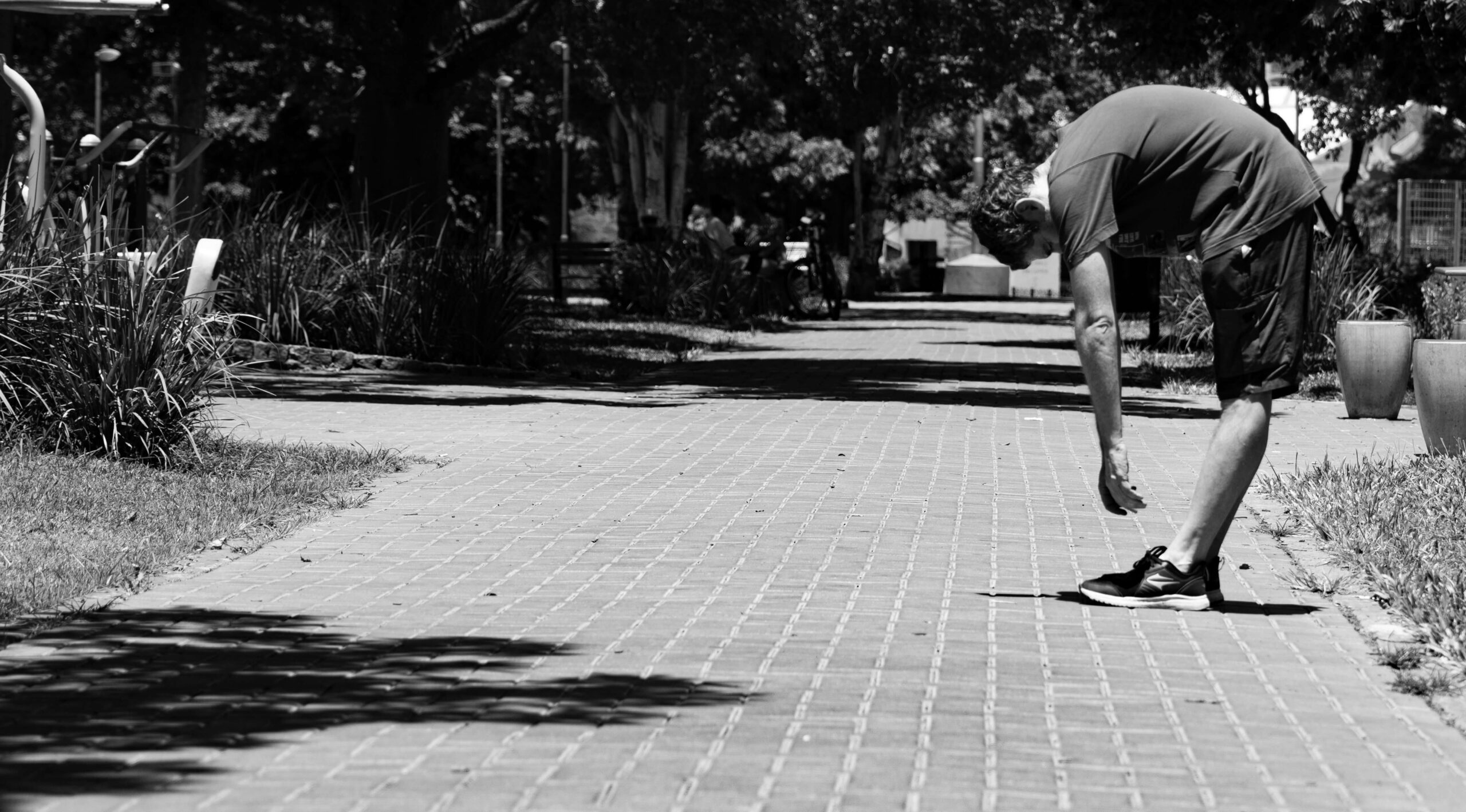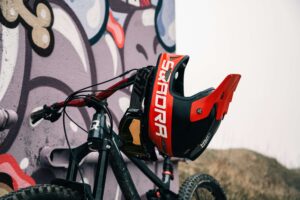Welcome to the essential guide for every mountain biker seeking to enhance their ride! In “Importance of The Flex: Using Equipment for Stretching Exercises in Mountain Biking,” we dive deep into the transformative world of stretching, unveiling how the right equipment can elevate your mountain biking experience. Whether you’re navigating rugged trails or seeking to boost your performance, understanding the pivotal role of stretching exercises equipped with the best gear is your first step toward a more fulfilling ride. Gear up, as we’re about to explore how these crucial exercises can improve your flexibility, prevent injuries, and ultimately, revolutionize your mountain biking adventures. Let’s embark on this journey to unlock your full potential on the trails!
Table of Contents
A Quick Intro into Stretching
Stretching is a fundamental aspect of any physical activity, including mountain biking. It involves lengthening the muscles to improve elasticity, flexibility, and ultimately, performance. In this section, we delve into the physiological benefits of stretching and how specialized equipment can enhance these exercises for mountain bikers.
What Happens to Your Muscles When You Stretch?
When we engage in stretching, we’re essentially coaxing our muscle fibers apart, subtly increasing their length. This action is pivotal for mountain bikers, as it directly contributes to a greater range of motion and flexibility, allowing for more agile navigation across varied terrains. Andrew Huberman, a neuroscientist and professor, provides profound insights into the science of stretching, emphasizing its essential place in our physical regimen. Huberman notes, “Having flexibility and our ability to stretch…are fundamental to how we move, our ability to learn new movements, indeed also to prevent injury or repair injuries” . Moreover, stretching boosts blood flow, enriching muscles with oxygen and nutrients crucial for recovery and enhanced performance.
Static or Dynamic Stretching? What is it and when to do it?
In the world of stretching, two primary types dominate: static and dynamic. Each serves a unique purpose in a fitness routine, especially for activities as physically demanding as mountain biking.
What is Static Stretching?
Static stretching involves holding a stretch in a comfortable position for a period of time, typically between 15 to 60 seconds. This form of stretching is best suited for cooling down after a ride, as it helps to relax the muscles, improve flexibility, and facilitate recovery. It’s a time when the muscles are warm and more elastic, making it safer and more effective to stretch and lengthen the muscle fibers.
What is Dynamic Stretching?
Dynamic stretching, on the other hand, involves performing gentle, controlled movements that mimic the sport or activity you’re about to undertake. For mountain bikers, this could include leg swings, arm circles, or gentle lunges. This type of stretching is ideal for warming up the muscles and joints, preparing them for the range of motion required during biking, and reducing the risk of injury.
When to Use Each Type of Stretching?
- Dynamic Stretching: Best performed before you hit the trails. It warms up the body, activates the muscles, and increases heart rate, getting you ready for the physical exertion to come.
- Static Stretching: Most beneficial after your ride. It helps to cool down the body, relax the muscles, and enhance flexibility over time.
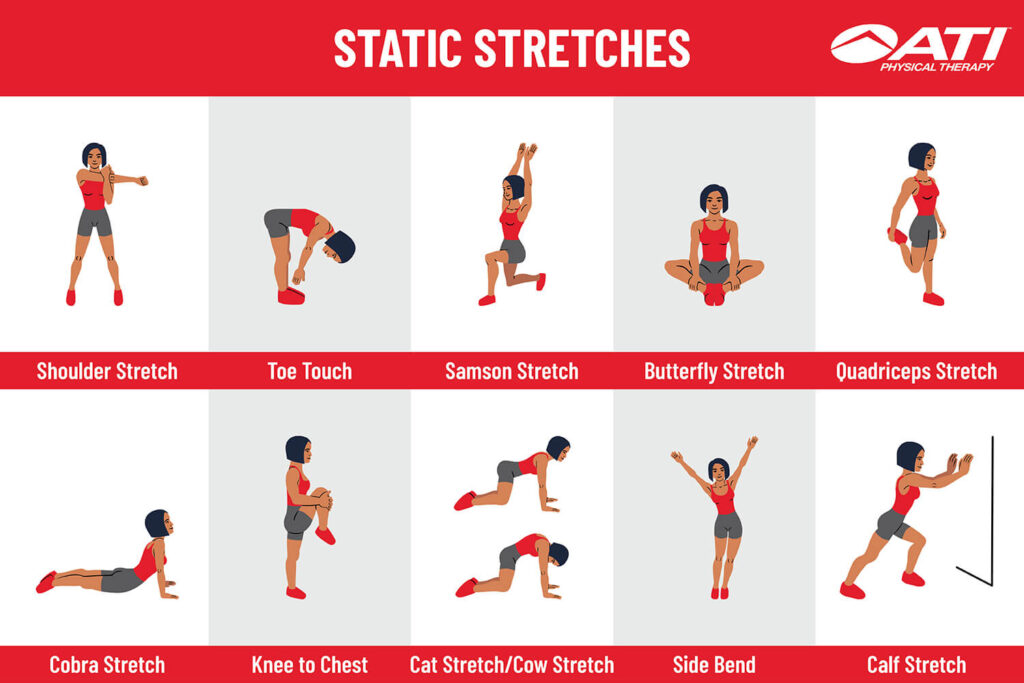
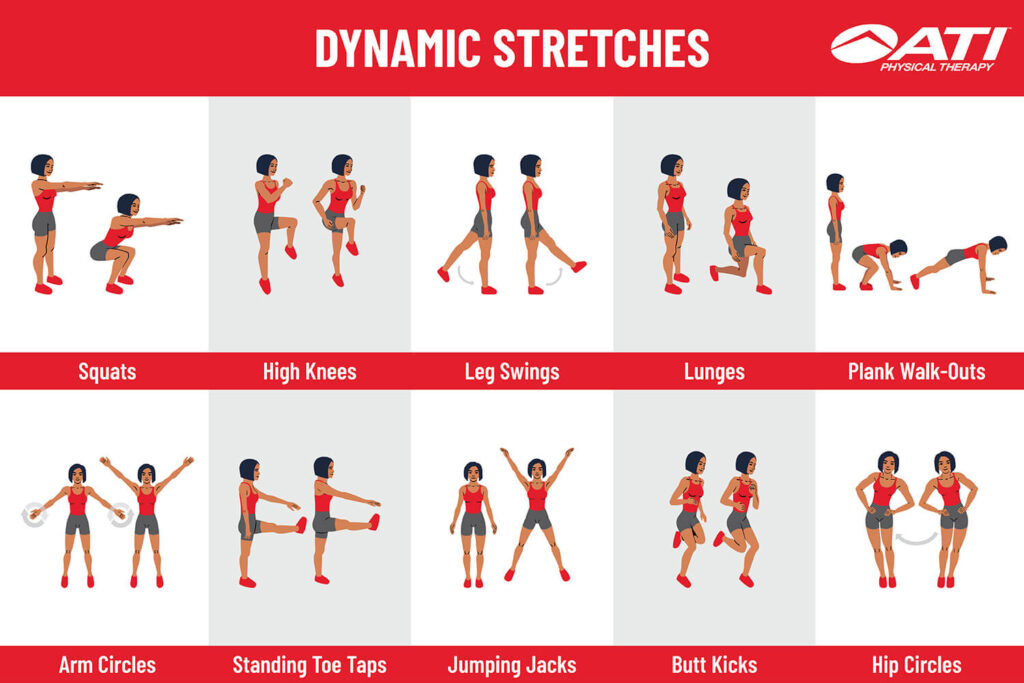
Understanding the differences between static and dynamic stretching and their appropriate application can significantly impact a mountain biker’s performance and recovery. Incorporating both types into your routine ensures a comprehensive approach to flexibility and injury prevention.
Check out our very own Pre-Ride Warmup Routine for before the ride, and this quick and easy Post-Ride Stretching Routine.
How Does Stretching Equipment Enhance Exercises?
Stretching equipment such as foam rollers, resistance bands, and yoga mats can target muscles more effectively, providing a deeper stretch and improving flexibility over time. Equipment can also help maintain proper form during stretches, which is crucial for reaping the benefits and preventing injury.
Feel free to also check out our review about the 6 Best Yoga Mats for Bikers.
By understanding the science behind stretching and its importance in mountain biking, riders can better appreciate the value of incorporating stretching exercises, and specifically equipment-assisted stretches, into their routines.
Choosing The Best Equipment for Stretching Exercises
When it comes to enhancing your mountain biking performance and recovery through stretching, the right equipment can make a significant difference. Not all stretching tools are created equal, and some are particularly well-suited to the needs of bikers. Let’s delve into an overview of the most beneficial stretching equipment for mountain bikers: foam rollers, resistance bands, and yoga mats.
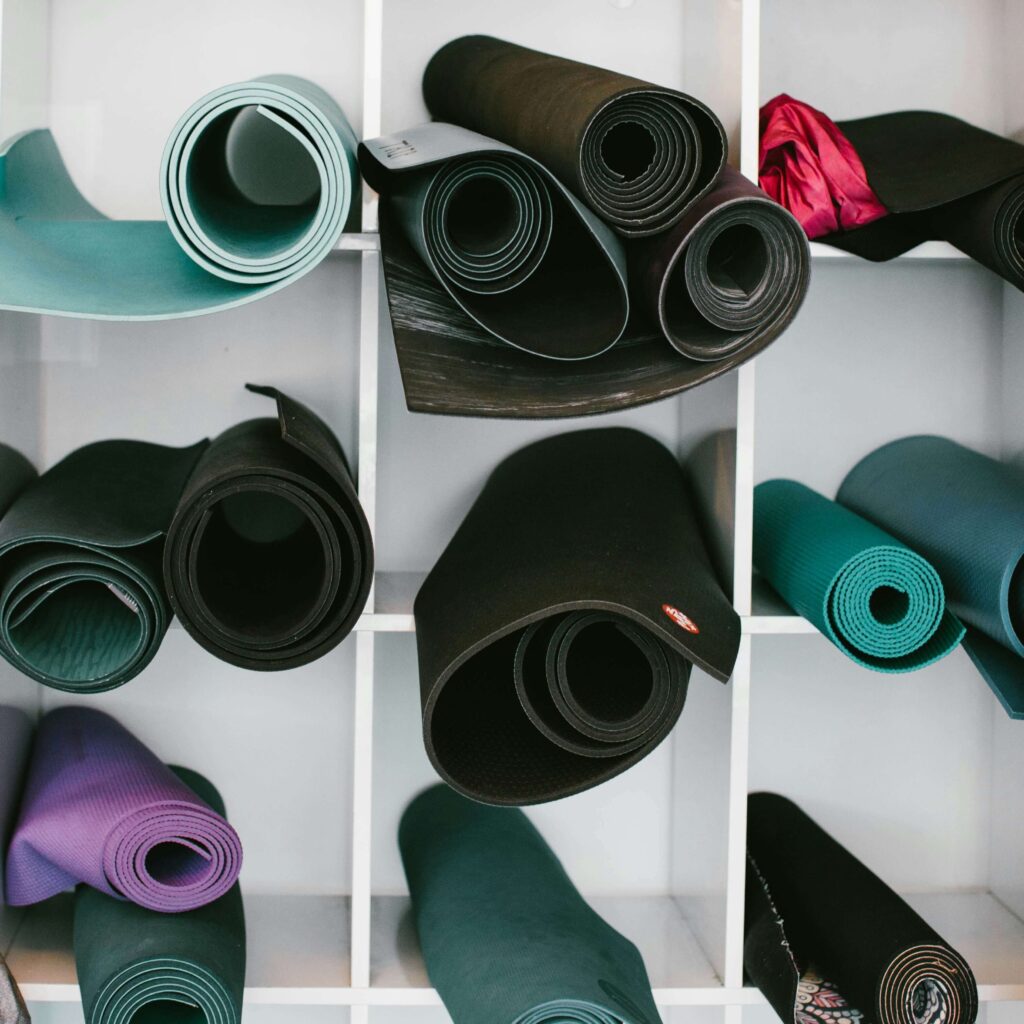
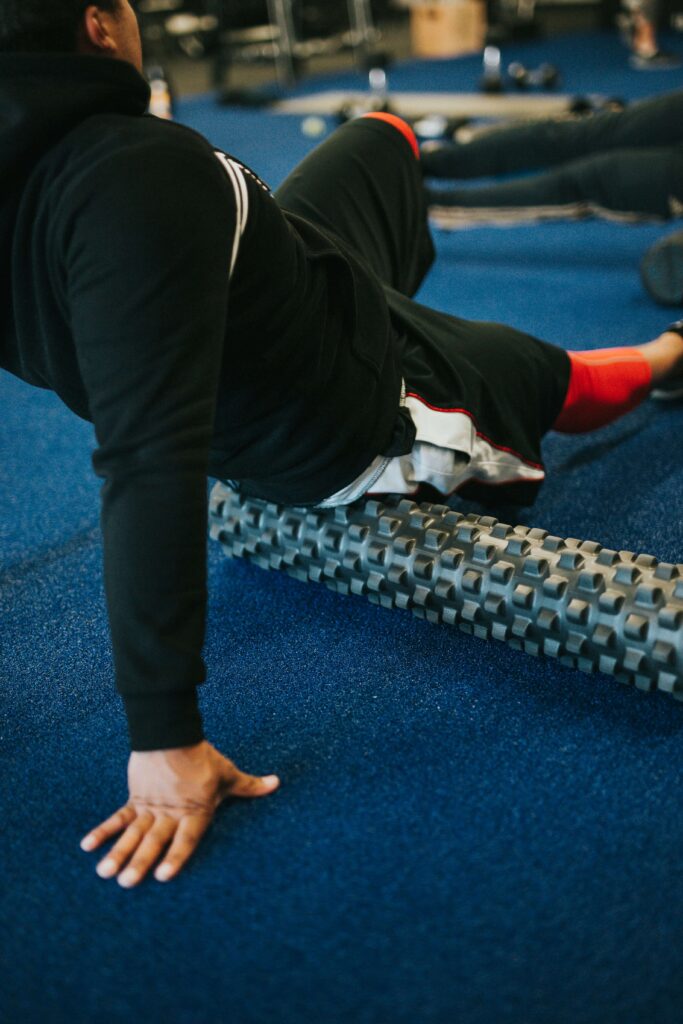

Foam Rollers: Deep Tissue Recovery
Factors to Consider:
- Durability: A robust foam roller can withstand the pressure needed to release tight muscles without losing shape.
- Versatility: Look for a roller that can target both large muscle groups and specific sore spots.
- Portability: Compact designs are ideal for bikers who want to take their recovery tools on the go.
Top Pick: Maximo Fitness Foam Roller 15cm x 45cm
Designed for deep tissue massage, this foam roller is a favorite among mountain bikers for its unmatched durability and effectiveness in soothing sore muscles post-ride. Its firm structure allows for an intense massage, perfect for targeting large muscle groups like quads and calves.

More Recommendations:
- Budget-Friendly Option: KAYMAN Sports Foam Roller – A simple, solid option for only 10 bucks!
- For the experienced Roller: HCFGS Deep Tissue Foam Roller – with a trigger point design to enable deep tissue muscle massage.
Resistance Bands: Flexibility and Strength
Factors to Consider:
- Durability: High-quality materials ensure the band can withstand regular stretching without snapping.
- Versatility: Bands that offer different resistance levels cater to various training needs, from warm-ups to strength building.
- Portability: Lightweight and compact, resistance bands are easy to carry on any biking adventure.
Top Pick: TOMSHOO Resistance Loop Bands
The Loop Resistance Band stands out for its versatility, allowing bikers to perform a wide range of stretching and strengthening exercises. It’s particularly effective for activating the hip and thigh muscles, crucial for pedaling power.
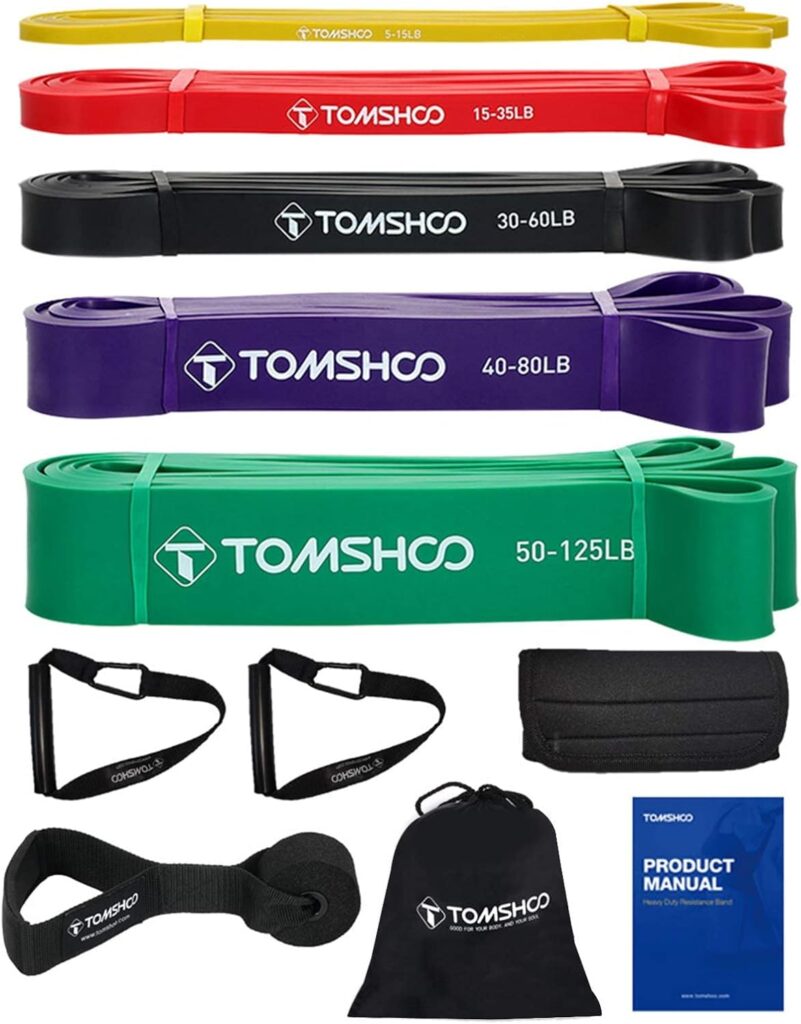
More Recommendations:
- Budget-Friendly Option: Gritin Resistance Bands, [Set of 5] – An affordable choice for basic stretching and strengthening needs.
- For Comprehensive Training: Resist Fit Resistance Bands Set 10-Level Home Gym Equipment – Offers multiple resistance levels for a full range of exercises.
Yoga Mats: Comfort and Stability
Factors to Consider:
- Durability: A well-made yoga mat will resist wear and tear, maintaining its texture and support over time.
- Versatility: A mat that’s suitable for various exercises, from gentle stretches to more dynamic yoga poses, offers the best value.
- Portability: Opt for a mat that’s easy to roll up and carry, with a lightweight design for hassle-free transport.
Top Pick: Liforme Original Yoga Mat
This yoga mat is a top choice for its superior grip and cushioning, providing a stable and comfortable surface for all types of stretching and yoga poses. Its non-slip feature is essential for maintaining poses safely, reducing the risk of injury.
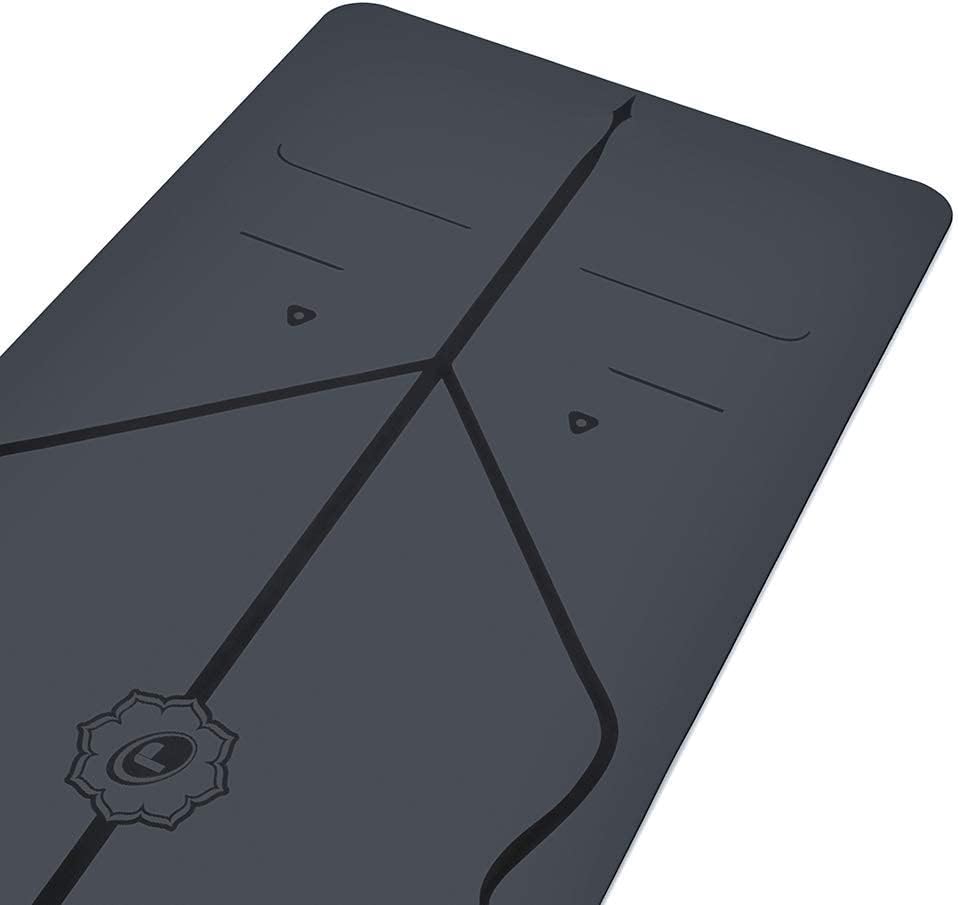
More Recommendations:
- Budget-Friendly Option: Yogii – Premium TPE Eco Friendly Non Slip Yoga Mat – Provides fundamental comfort and support for occasional use.
- For the Eco-Conscious Biker: Haninj Eco-Friendly Natural Cork Yoga Mat – Made from renewable resources, perfect for those looking to minimize their environmental footprint.
Equipping yourself with the right stretching tools is a game-changer for any mountain biker. By focusing on durability, versatility, and portability, you can select equipment that not only enhances your performance and recovery but also fits your budget and lifestyle. Whether you’re just starting out or looking to upgrade your stretching routine, these top picks and recommendations cater to a wide range of needs and preferences.
Conclusion
In summary, integrating a structured stretching routine, supported by the right equipment, can significantly enhance the mountain biking experience. From improving flexibility and range of motion to ensuring a speedy recovery and reducing the risk of injury, the benefits of incorporating foam rollers, resistance bands, and yoga mats into your routine are clear. Each piece of equipment offers unique advantages, tailored to the needs of bikers at every level, making stretching an indispensable part of your biking regimen.
Incorporating the right stretching equipment into your mountain biking routine is not just about enhancing your performance on the trails; it’s about committing to your overall well-being and longevity in the sport. Whether you’re winding down after an exhilarating ride or warming up for the next adventure, remember that the key to a better ride might just lie in a good stretch.
What type of stretching equipment is most essential for beginner mountain bikers?
For beginners, starting with a high-density foam roller can be incredibly beneficial. It’s versatile, easy to use, and effective for a wide range of stretches and muscle relief techniques. Foam rollers are great for working out the knots and tightness that often come with adjusting to mountain biking, making them an essential tool for new bikers building up their flexibility and endurance.
Can stretching equipment help with injury rehabilitation?
Yes, stretching equipment like foam rollers and resistance bands can be instrumental in injury rehabilitation. Foam rollers help in myofascial release, easing muscle tightness and promoting healing, while resistance bands are excellent for regaining strength and flexibility during recovery. However, always consult with a healthcare professional before starting any rehabilitation routine.
Is it worth investing in high-end stretching equipment?
While high-end equipment often comes with added durability and features, many budget-friendly options are also effective. Your investment should depend on your specific needs, frequency of use, and the level of comfort you seek. For casual bikers, basic equipment may suffice, but for those who bike frequently or competitively, higher-quality equipment might offer better long-term value and performance.

